The massive motorbikes for easy riders
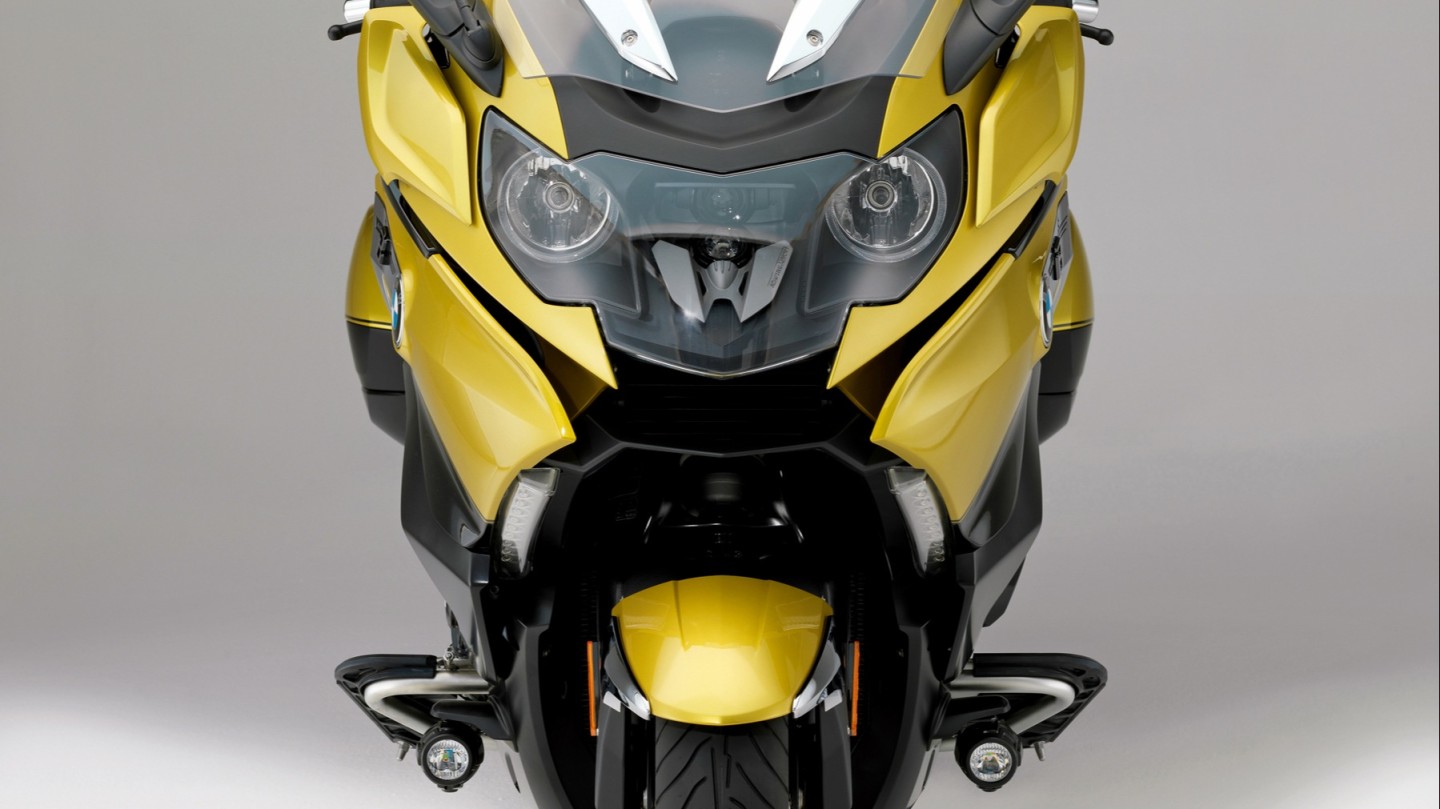
Roula Khalaf, Editor of the FT, selects her favourite stories in this weekly newsletter.
It was a case of shock and awe when Honda pulled the wraps off its latest creation at the Cologne motorcycle show back in 1974. Having already wowed the two-wheeled world five years earlier with the release of “the world’s first superbike” in the form of the CB750 Four, the Japanese maker caused an even greater sensation with the launch of its spectacular new long-distance touring machine – the Gold Wing GL1000.
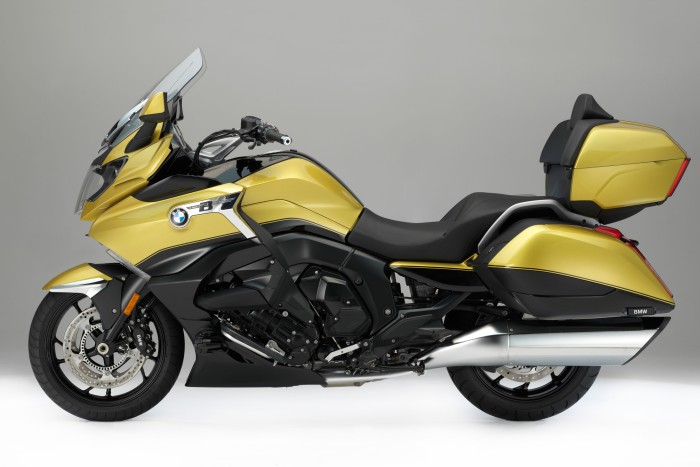
Unlike any motorcycle seen before, the bike was a technological tour de force with a whisper-quiet, water-cooled 999cc flat-four engine, shaft drive and a trio of disc brakes. What appeared to be a conventional fuel tank was actually a plastic dummy that hinged outwards, clamshell-style, to reveal electrical components, the radiator – and an emergency kickstarter that could be fitted in the event of a flat battery. In reality, the 4.8 gallons of fuel were stored below the seat to lower the centre of gravity of the 265kg bike that, despite its bulk, could cover a quarter of a mile quicker than a Porsche 911 and carry on to a top speed of 125mph.
Now, 45 years down the road, the Gold Wing remains Honda’s flagship motorcycle – but the latest iteration is vastly more sophisticated than the first effort that, despite its long-distance touring pretensions, was supplied without even a wind-cheating fairing or the most basic of luggage. Today’s “Wing”, the sixth generation of the model, has a silky-smooth, six-cylinder engine of 1,833cc, a seven-speed dual-clutch gearbox that offers a choice of manual or automatic operation, and four switchable driving modes that perfectly match the suspension and power delivery to rain, economy, tour or sport riding. The bit that used to be referred to simply as “the handlebars” is now the “control centre” and home to a 7in, full-colour LCD screen equipped with Apple CarPlay, satellite navigation and Bluetooth connectivity, all contained in a wind-tunnel-developed, wrap-around fairing topped by an electric screen that can be adjusted for height and angle – with the rider’s favourite settings being stored in the machine’s ultra-sophisticated computer “brain”.
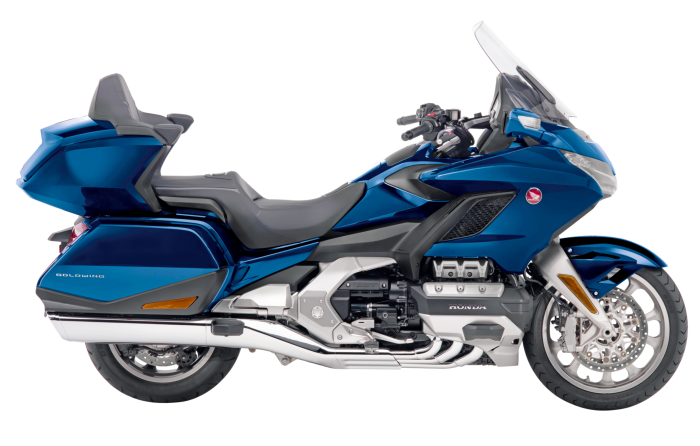
Such creature comforts come at a price, however. In fact, they come at two prices, one being weight – today’s range-topping Gold Wing Tour DCT tips the scales at 382kg and has a special “walking gear” to make it easier to manoeuvre backwards and forwards when parking; the other being the actual price: this model will set you back £30,699 (complete with air bag-equipped fairing), sufficient to buy a well-appointed Audi saloon car or a VW Tiguan SUV. And it’s partly the high cost of bikes such as the Gold Wing that has elevated them to a rarefied position in the two‑wheeled market, where they are sold in small numbers to a niche group of wealthy riders who seek almost car-like levels of luxury and comfort with the visceral thrill that only a motorcycle can provide.
“There was a time when any motorcyclist who wanted to cover a large distance would choose a machine such as a Gold Wing or BMW touring bike,” says Matt Wildee, the editor of Ride, a UK magazine aimed at owners with a passion for serious touring. “But recent years have seen many buyers migrate to so-called ‘adventure sports’ bikes, which are capable of covering large distances on fast roads and carrying plenty of luggage, but also have a degree of off‑road capability that means they can be taken to more remote areas and unmettled tracks – their popularity exploded after the Long Way Round and Long Way Down trips made by Ewan McGregor and Charley Boorman [in 2004 and 2007 respectively].
“For truly relaxed, long-distance road riding, however, a dedicated tourer such as a Gold Wing or a BMW K1600 is impossible to beat. I recently needed to travel from my home in the UK to Austria in a single day, a journey of more than 800 miles. I did it on a K1600 and it was more or less effortless, especially on unrestricted sections of the German Autobahn, where it was possible to sit at more than 100mph with the cruise control engaged while listening to the radio. I would say 900 miles in a day on one of these bikes is totally doable.”
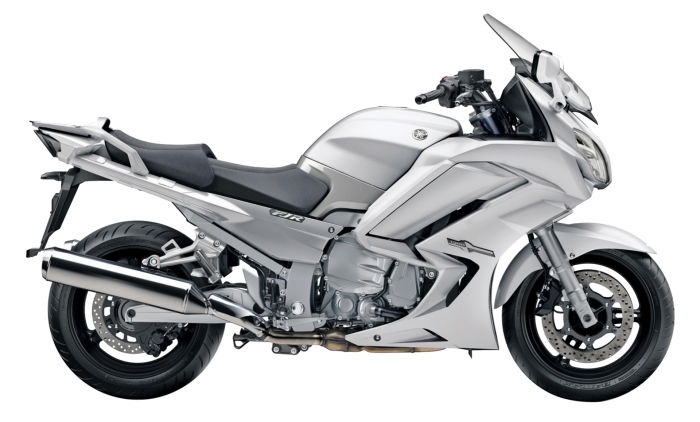
The BMW K1600 that Wildee selected is the Gold Wing’s most direct rival, being a similarly ultra-sophisticated and well-equipped tourer, albeit with a slightly smaller, 1,649cc, in-line six-cylinder engine that has been described by the specialist press “as one of the smoothest on the market… sublime” and not delivering just a wave of torque, or pulling power, but “more of a tsunami…” The entry-level GT model will set you back £16,800, rising to £24,410 for the range-topping Grand America that comes with everything from heated seats to hill-start control, a powerful and sophisticated, multi-speaker audio setup, and even an emergency “concierge” system called ECall that can be activated in the event of an accident, breakdown or illness and connects the user directly with operators in a dedicated BMW call centre. As with the Gold Wing, the bike also features a keyless ignition and remote opening of the fitted luggage.
There are, however, those who want a motorcycle that will eat up the road miles quickly and smoothly, but feels a little less like a two-wheeled car. For them, Japanese manufacturer Yamaha offers its 2020 FJR1300, a “sports tourer” capable of more than 150mph and featuring two riding modes, adjustable seat height and steering angles and LED lighting all round. At a basic of £14,799, it’s half the price of a Gold Wing and, despite still being large, is considerably more nimble – although luggage is an optional extra that can add more than £1,800 to the final figure.
But for real traditionalists, the turbine-smooth hum of the FJR’s finely balanced, almost clinical four‑cylinder engine might still render the bike “over-sophisticated” – because there are still plenty of riders who like to feel the raw power delivery of an old-school motor, especially that of a classic, air-cooled V-twin. Harley-Davidson has more form than any other manufacturer in that department, and its touring range offers a selection of machines that will appeal to lovers of motorcycles that really look and sound like motorcycles, but still incorporate a few of the luxury touches that make gentle, long-distance touring more of a pleasure than a pain.
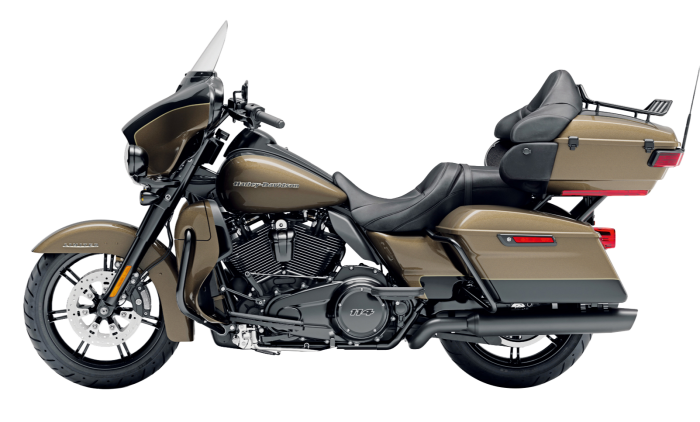
Historically, Harley’s large-capacity V-twin engines have been associated with ground-shaking exhaust notes and body-numbing vibration – but anyone who hasn’t ridden one of the American marque’s latest tourers is likely to be surprised by their smoothness and sophistication. I certainly was during a recent, 400‑mile round trip on a mid-range Street Glide Special (from £22,895), which came complete with a sat-nav system, radio, capacious panniers and an apparently decorative but surprisingly effective handlebar fairing.
Much of the touring competence of modern-day Harleys is down to the use of rubber engine mountings, with further refinement coming from fuel injection and a linked, anti-lock braking system – while up-to-date connectivity helps to bring an undeniably old design into the 21st century. The range topping Ultra Limited for 2020, for example, combines Harley’s largest-capacity, 114 cu in/1.86-litre engine with the firm’s H-D Connect system that allows an owner to monitor the machine’s systems and service status on a smartphone, as well as enhancing security by incorporating tamper-alert and vehicle-tracking apps. The maker’s seven-model touring bike line-up starts with the Electra Glide Standard at £20,195, rising to £24,695 for the Ultra Limited – but that’s before delving into the enormous and money-spinning Harley accessories catalogue, which enables owners to “build a Harley-Davidson motorcycle unlike any other on the road” using a range of customising parts that can effectively double the cost of the basic bike.
Until a couple of years ago, Harley-Davidson’s main – but still relatively insignificant competitor – in the V-twin touring-bike market was Italy’s Moto Guzzi, which maintains a loyal following among long-distance riders for the latest versions of its long-standing California models. The latest, the 1400 Touring, comes in at £17,999 and benefits from an anti-vibration system, has an optional multimedia platform with smartphone connectivity, and can be fitted with a wealth of accessories, from bags that attach to the fuel tank and handelbars to nicely crafted leather panniers and rear-mounted luggage boxes.
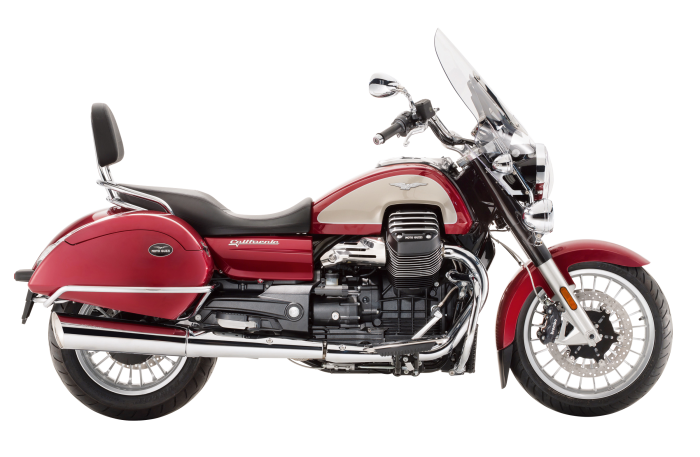
Lately, however, both makes have come under attack from the revitalised Indian marque that has been owned by snowmobile and ATV manufacturer Polaris Industries since 2011. Dating from 1897, the storied firm is, some are surprised to discover, America’s oldest motorcycle maker. Its prewar, V-twin-engined machines were famed for their success in board-track racing, as the favoured mount of daredevil riders on the Wall of Death and the official bikes of many a US police department.
More recently, however, the maker returned to recognition with the 2005 release of the movie The World’s Fastest Indian starring Anthony Hopkins, the daredevil tale of New Zealander Burt Munro who spent his life home-tuning a 1919 Indian Scout in order to travel around the world to America’s Bonneville Salt Flats – where, in 1967, he set a motorcycle land-speed record of 183.58mph at the age of 68. And since Polaris is converting Indian from mere builder of motorcycles to a “brand” – and a luxury one at that – such history is the sort of marketing gold it hopes will attract buyers sufficiently wealthy to be able to afford the machines, which it is confidently pitching at higher prices than many of those made by Harley-Davidson.
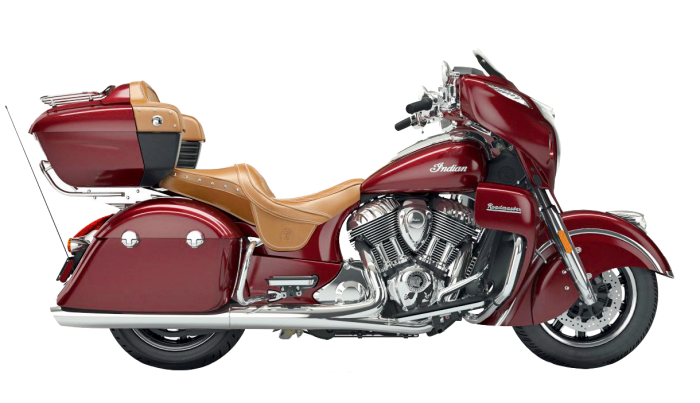
Currently, the jewel in Indian’s crown is the Roadmaster, a £26,199 “full-dress tourer” featuring Indian’s Ride Command touchscreen infotainment system, a 115cu in/1.89-litre Thunder Stroke engine and a throne-like pillion seat. Fit and finish are exceptional, and the firm is sufficiently confident in the build quality of its bikes to provide a five-year warranty.
But perhaps the best evidence that Indian is chasing down Harley-Davidson in the battle of the luxury touring motorcycles can be seen in the quality of its accessory offering – the £158 bespoke bags designed to fit perfectly inside each pannier wouldn’t look out of place in a Bond Street boutique; likewise, the £506 messenger case and the £1,100 quilted-hide saddle. And as for the leather mudflap extensions… well, you wouldn’t want to get them dirty, would you? Not at £95 apiece.
Comments